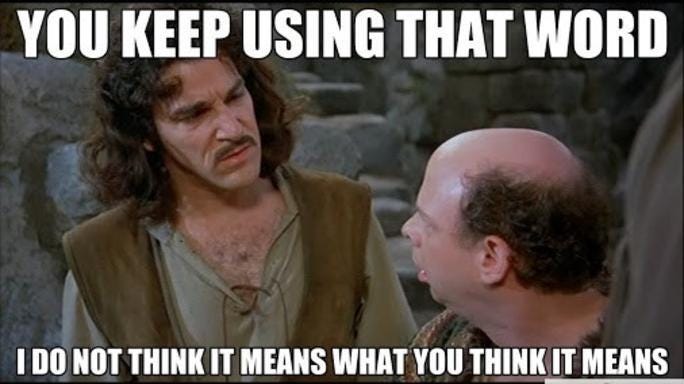#7: What Does It Even Mean?
The meaning of the term “patient engagement”; reflections on research in 2022; and the value of true dissemination of science.
The first issue of 2022, this week I explore the meaning of the term “patient engagement”; reflecting on a commentary on the state of research in 2022; the value of true dissemination of science, and the first two books knocked off my reading list for 2022. Thanks for joining this journey, and get in touch with any questions or comments!
Found in Translation Blog
Terms of Engagement
Maybe it’s just me, but I find that staying informed of current research practice often feels like I’m trying to take a sip of water from a fire hose. Journal articles only scratch the surface, with vast more treasures lying in wait through social media postings.
As I looked through engagement posts this week, though, it occurred to me that it may be time to consider our use of the term patient engagement. I’m trying to find new projects that engage patients as partners, but what I’m sifting through is a lot of noise - companies, medical practices, and healthcare systems adopting a trendy term to flog an app or a software program that claims to increase engagement in a decidedly customer-focused model of healthcare.
To make it easier to stay current, then, I’ve made it a regular activity to scour key terms on Twitter, like “knowledge translation”, “share your science”, and “patient engagement”. Admittedly, it’s here where content feels like a firehose, so hashtags and key terms are helpful in narrowing the search.
What is always curious about these “patient engagement” products or approaches is that the direction of engagement - of communication - flows one way: from researcher to patient. Further, the term seems to place the emphasis for change on those who are already changed, by nature of their quality of life being impacted by something that is often summarized in another’s chart note or billable visit.
Perhaps our focus, then, should be less on engaging people who are already engaged, and more on teaching those who hold the door to richer opportunity on how to be more engaged, and in such a way that it changes the system from within and ultimately makes them better partners for their patients? To start, a shift from #PatientEngagement to #ResearcherEngagement may help re-emphasize efforts.
Has the term “patient engagement” become diluted or co-opted? I’m starting to think so, and wonder if another term should be introduced to refocus efforts for bigger impact.
#HowToDoPtEngagement

My tweet earlier this week linked back to this article in the Lancet. It’s a great read, but the last paragraph that I quoted in my tweet particularly stuck with me. It emphasizes a core issue with scientific literacy - that it’s not just plain language, but building an environment that allows for those plain language words to be exchanged in a trusting, supportive and open dialogue.
The state of science and society in 2022: “…when the catastrophic numbers of infections are taken as expectations, and do not come to pass, the public’s trust risks being undermined. There is a need to strengthen scientific literacy, both in the public and in leadership, and to communicate the caveats and limits of science honestly and transparently.”
#ShareYourScience

As I continue on my research career journey, I realize more how journal articles and conference posters - still considered the bread and butter of sharing research - are only one piece of the work in sharing science. Moreover, I would argue that stopping with just these outputs is akin to not disseminating at all; depending on the topic, journals and conferences have limited readership or attendance. If you can’t get it published (and don’t have access to a preprint server or institutional repository), it is likely shelved to the depths of the unknown.
However, the more that you spread your work, the more people know about it. If it does end up unpublished in a journal and at the back of the file drawer, there’s still a chance that others can find it and incorporate into systematic reviews / meta-analyses.
Reading Rainbow
The same as last year, I’ve committed to reading 26 books in 2022. You can follow along on my GoodReads link, where I’ve already finished two:
The Menopause Manifesto: Own Your Health with Facts and Feminism by Jennifer Gunter
Another excellent resource by Dr. Gunter, which blends facts into a feminist narrative about “The Change”. There were times I thought it was a bit densely written, but I think it can be forgiven as it’s meant to be a resource one returns to over time.
The Remains of the Day by Kazuo Ishiguro
I read “An Artist of the Floating World” through a library recommendation and thoroughly enjoyed it. Then I found out the Nobel Laureate also wrote this quiet tale of the meaning of dignity and duty in early 20th century England (since made into a movie with Anthony Hopkins and Emma Thompson). I was leaning to 4 stars, then I read the last chapter and was politely punched in the gut. Heartbreaking.




